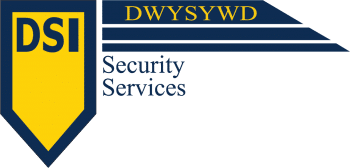By Jamie Ridenhour
The past decade has seen several challenges for shopping malls. The shift of customer purchasing to E-Commerce has been a gradual process resulting in declining mall traffic that has only been exacerbated by the influence of the pandemic over the past couple of years. Mall owners have been forced to reevaluate many of their operational standards and priorities to attract and retain customers.
An important area that may sometimes be overlooked is safety and security. Mall designers of the past may not have viewed safety and security as having an adequate return on investment, but it is certainly a consideration today. As we discussed in our recent CPTED article, customers need to feel welcomed and protected when shopping, and management teams ignore this at their peril. Injuries and litigation can obviously be costly, but simply allowing customers to feel unsafe can lead to economic failure.
Fortunately, new technology and safety management concepts have made incorporating safety and security into the daily routine much more achievable. Video and audio surveillance capabilities have improved rapidly over the past decade and the latest automated systems can significantly reduce the time spent monitoring and analyzing the information received.
The use of video cameras for surveillance in shopping areas became prevalent in the 1980s. Although the images during that period were low quality and grainy by today’s standards, they demonstrated the usefulness of the technology. Security personnel could monitor activity in multiple areas from a single location, significantly increasing coverage with a minimal increase in staffing.
Today’s cameras offer that same functionality, but at a much higher resolution. Current camera systems record high-definition video, many with 4K resolution and 8K on the horizon. That increase in resolution provides a clearer picture and allows officers to zoom in on a person or item of interest more effectively. Pan-tilt-zoom technology is also commonplace now, giving each camera a much wider area of coverage. The addition of audio has also markedly improved camera effectiveness. The ability to hear what is going on as well as seeing it allows security personnel to get a much better grasp of the situation.
Perhaps the most important improvement in camera technology is the addition of artificial intelligence (AI) technology for camera control and video analysis. The earliest implementation of surveillance cameras required constant monitoring by security personnel. We all recall movies showing a security officer watching a bank of monitors showing many different locations and angles. The obvious drawback was the need for continuous staffing of officers who could stay alert watching many screens for long periods.
AI takes much of that load off human officers. The technology can effectively adjust camera angle and focus to capture incidents as they occur, and analyzing that video is where AI provides even more value. Video analytics applications can continuously analyze video from all cameras to spot unusual or violent behavior, monitor social distancing, and detect suspicious packages. Security personnel and law enforcement can be instantly notified of any potential issues, often leading to preemptive action.
Video analytics also provides valuable historical analysis to help mall management and security personnel keep customers safer. Analyzing past activity and unusual events can lead to the most effective deployment of security resources or changes in mall operating procedure. AI makes in depth analysis easier than ever and provides a better insight into risk.
A further application of AI technology is now being seen in the use of robotic devices in shopping centers and malls. Robotic devices such as those from RAD can monitor entrances and even patrol in a similar way to what security officers do. AI allows robotic devices to identify threats in the same manner that their human counterparts would, but on a 24/7 schedule and under all weather conditions. The latest robotic devices can also interact with shoppers, providing a further level of safety and comfort as well as promotional value.
Communication is another facet of security that has improved dramatically over the past decade. Cellular technology and force management applications have made real-time communication between security officers, management and law enforcement quicker and easier than ever. The applications also create a centralized repository where officers can easily save entries, photos, and video to document incidents or potential risk areas.
Risks to customers and property are constantly evolving and training of security staff has changed as well. Training is updated periodically, and personnel should be trained at least annually. Ideally, the training includes live emergency drills in coordination with local law enforcement. Active shooter exercises are a critical focus, but response plans for hurricanes, evacuation, emergency lockdown, earthquakes and wildfires are also often included.
Where consumers choose to spend their money has changed drastically over the past decade and many malls and shopping centers have succumbed to the pressure. To survive, these commercial centers must be at the top of their game and effective security plays an important role in the plan. A mall must not only be safe, but the emphasis on security must be demonstrated to shoppers and the newest innovations can help.







